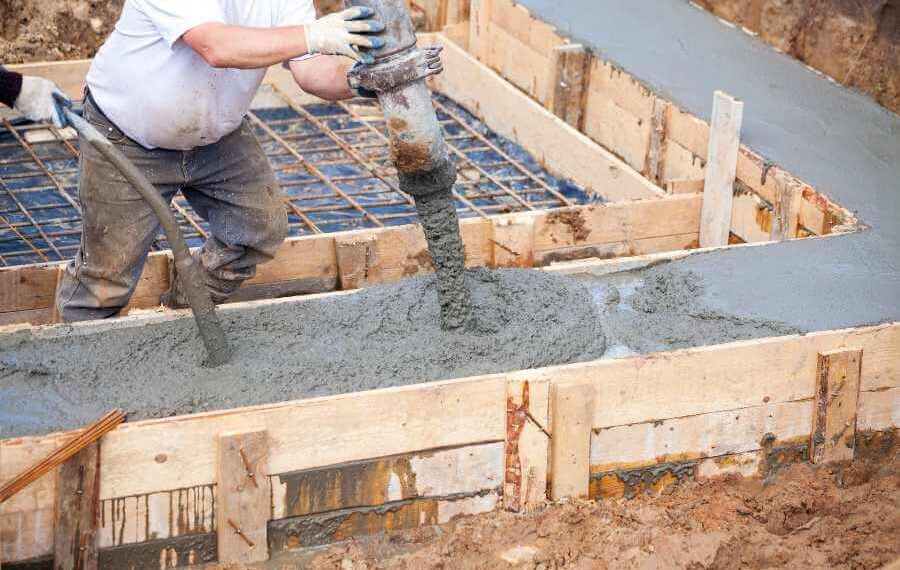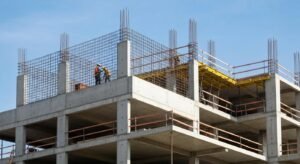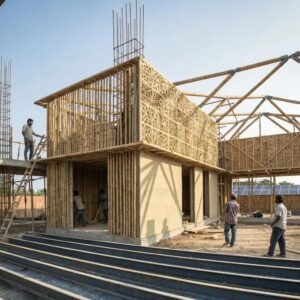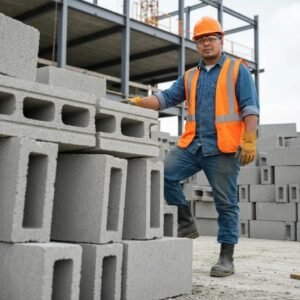In Houston, TX, foundation repair is an essential service for homeowners due to the region’s unique soil and environmental conditions. Over time, foundations in this area often experience wear and tear, from minor cracks to severe structural damage. Understanding what factors influence the cost of foundation repair helps homeowners make informed decisions when they face foundation issues.
From the type of foundation to the extent of damage, each element plays a role in determining repair costs. As a trusted foundation repair contractor in Houston, RJT Construction offers expert services to assess and address all foundation-related concerns, ensuring long-term stability and peace of mind for your home.
Understanding Foundation Types in Houston, TX
Houston homes feature a variety of foundation types, each with its own set of advantages, challenges, and repair costs. Being aware of these differences can help homeowners understand payment plans and what factors contribute to the price of foundation repairs.
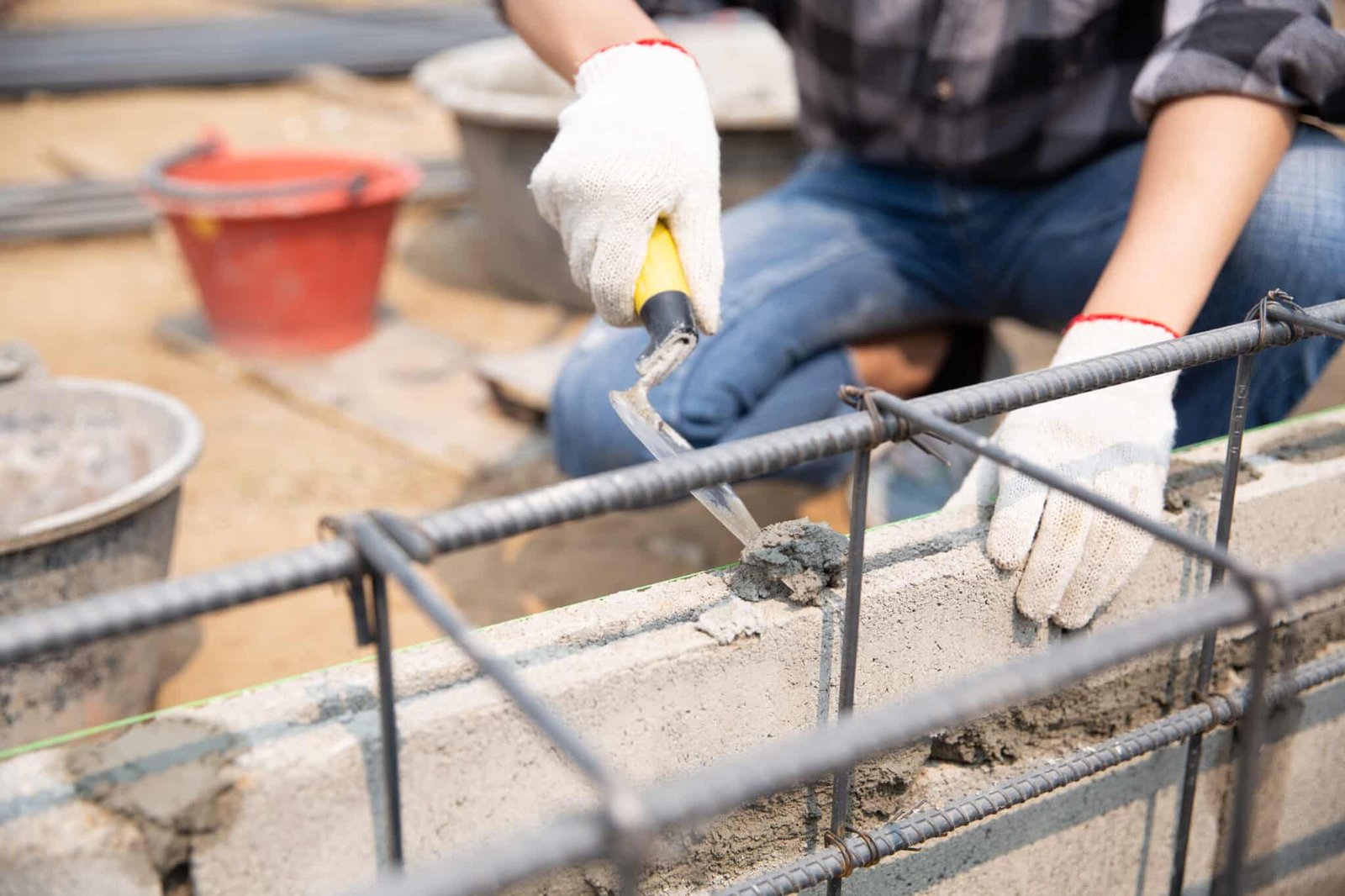
Whether it’s a concrete slab foundation, pier and beam foundation, or basement foundation, each has specific requirements and costs associated with repair. This section explores the common types of foundations found in Houston homes and their individual repair considerations.
Characteristics of Concrete Slab Foundations
Concrete slab foundations are one of the most common types in Houston homes due to their cost-effectiveness and durability. These foundations are built directly on the ground and are designed to support the weight of the home above them. However, issues like poor drainage, shifting soil, and tree root damage can lead to cracks and settling. Repair costs can vary based on the severity of the damage, from minor cracks requiring patching to extensive work involving lifting or stabilization.
Differences and Challenges with Pier and Beam Foundations
Pier and beam foundations are typically raised above the ground, supported by piers. These foundations are often found in older homes or areas with unstable soil. The primary challenge with pier and beam foundations is that they are prone to settling or shifting, which can cause uneven floors and structural issues. Repair costs can vary based on the number of piers needing adjustments or replacement, as well as the extent of the issue caused by soil movement.
Basement Foundations: Usage and Issues
Basement foundations are less common in Houston but are still found in certain areas, particularly in homes built before the 1980s. These foundations come with their own set of issues, such as water intrusion and shifting due to fluctuating soil conditions. Basement foundation repair can be costly due to the need for specialized techniques like waterproofing, foundation wall reinforcement, and basement support. Soil conditions, poor drainage, and water damage play a significant role in driving up repair costs for basement foundations.
Key Factors Impacting Foundation Repair Costs
When it comes to foundation repair, various factors play a crucial role in determining the overall cost. These factors range from the severity of the damage to the complexity of the repair methods required. Understanding these elements can help homeowners and business owners in Houston, TX, plan and budget for the necessary repairs.
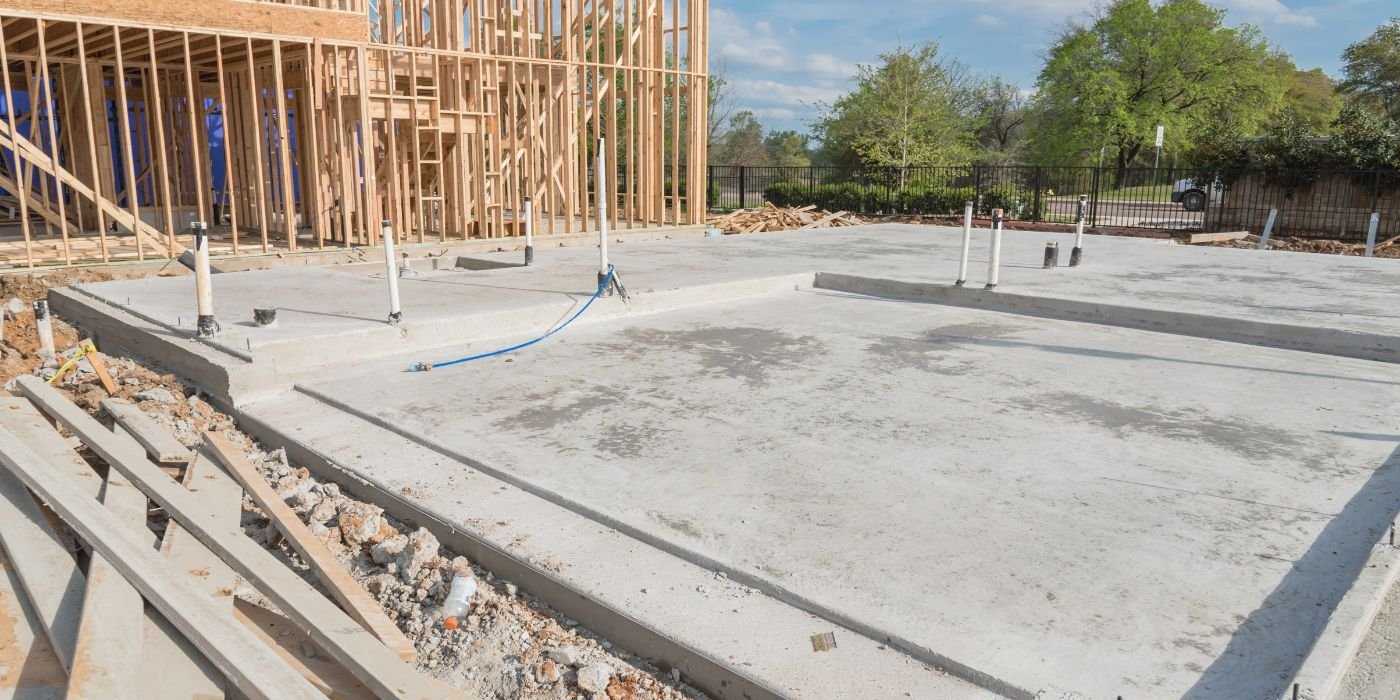
Extent of Damage and Repair Urgency
The extent of foundation damage is one of the most significant cost factors in foundation repair. Minor repairs, such as fixing small vertical or horizontal cracks, are generally more affordable. However, more severe damage, such as foundation shifting, bowing walls, or structural instability, requires extensive repairs that can significantly increase the overall cost.
The urgency of the repair also impacts pricing: immediate fixes to prevent further foundation damage tend to be costlier, while long-term solutions for stabilization may involve more comprehensive work but could be more cost-effective in the long run.
Size and Complexity of the Foundation
Larger homes or foundations naturally require more extensive repairs, and as a result, their repair costs tend to be higher. The number of piers or foundation walls that need attention, along with the overall size of your home and the structure, can impact the time and labor required for the repair. Additionally, structural integrity issues, such as the depth of cracks or uneven settling, will influence the method and materials used in the repair. Homes with complex foundation designs may need custom solutions, which can further increase the cost.
Type of Foundation Repair Method
The choice of repair method significantly affects the cost. For instance, polyurethane foam injection is a popular solution for minor slab foundation cracks, as it’s less invasive and cost-effective. However, steel piers and concrete piers are typically required for more serious foundation problems, such as sinking foundations orshifting slabs, and can be more expensive due to the materials and labor involved.
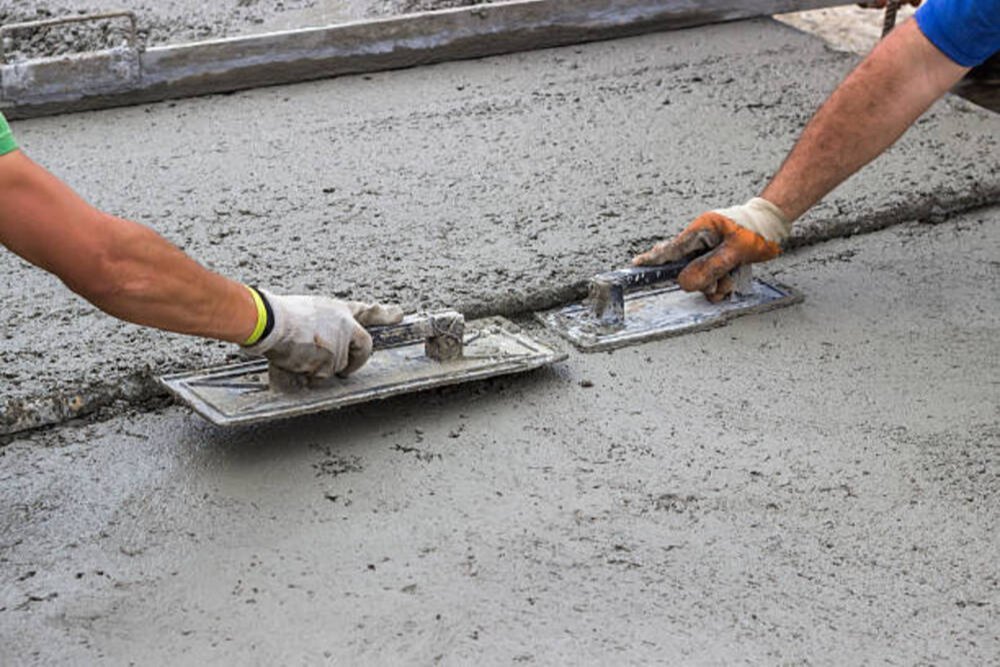
The type of foundation—whether it’s a slab, pier and beam, or basement foundation—also dictates the method used. Each foundation type requires a tailored approach, and the concrete foundation repair method chosen will depend on the severity of the damage and the long-term stability of the home.
Geographic Influences on Foundation Repairs
The geographic conditions of Houston, TX, significantly impact the cost of foundation repairs. Local environmental factors such as soil type, tree roots, water damage, and the region’s climate, along with local building codes, all contribute to foundation instability. Houston’s foundation issues often arise from these geographic elements, leading to expensive repairs. Understanding these influences can help homeowners anticipate potential repair costs and plan accordingly.
Soil Type and Environmental Conditions in Houston
Houston’s soil is primarily clay-based, which expands and contracts with moisture changes. This fluctuation can cause foundations to shift, resulting in cracks and structural issues. Soil erosion, in particular, worsens foundation stability, leading to sinking foundations and costly repairs. Tree roots also contribute to soil displacement, adding pressure to foundations.
Additionally, water damage from heavy rains exacerbates soil movement, impacting repair costs. Addressing these soil-related issues often involves foundational stabilization techniques such as piering or polyurethane foam injection.
Impact of Local Climate on Foundation Durability
Houston’s hot summers and heavy rainfall contribute to the area’s soil conditions, which can significantly impact foundation durability. The heat causes soil to dry out and shrink, while rainfall saturates the soil, leading to expansion. This constant fluctuation creates a shifting foundation, which leads to structural instability and sinking foundations.
Over time, these climate-driven conditions result in more significant foundation problems, making repairs more expensive. As the climate continues to affect the region’s soil, the long-term cost of repairs can increase, especially for homes without proper drainage.
Identifying Minor versus Major Cracks
Cracks in foundations can be either cosmetic or structural. Minor cracks, often vertical and thin, usually do not indicate significant problems and are less costly to repair. On the other hand, major cracks, such as horizontal or large vertical cracks, can signal more serious issues, such as shifting foundations or water damage. The cost of repair increases depending on the severity of the cracks. Homeowners should assess the size and depth of cracks to determine whether a quick fix or extensive repair is needed.
Symptoms of Structural Damage in Foundations
Structural damage in foundations is often evident through visible signs such as bowing walls, cracked foundation walls, and uneven floors. Sinking foundations are another clear indicator of serious structural damage. These issues not only affect the stability of the home but also require significant repair work. The cost of repairs increases with the severity of these structural issues, especially when specialized methods like piering, polyurethane foam, or carbon fiber reinforcement are needed to restore stability and prevent further damage.
Foundation Issues Caused by Poor Construction and Drainage
Poor construction and inadequate drainage systems are common causes of foundation issues. Homes built on unstable soil or without proper foundation drainage, including adequate crawl space drainage, are more prone to shifting foundations and water damage. Signs of poor drainage include water pooling near the foundation, dampness in the basement, and soil erosion around the property.
These issues can lead to extensive repairs, including foundation wall stabilization and the installation of proper drainage systems, making it crucial to address these concerns early to avoid costly repairs down the road.
Advanced Repair Techniques for Durable Solutions
As foundation repair technology advances, new techniques and materials are making it easier and more cost-effective to address serious foundation issues. Modern repair methods not only restore stability but also offer long-term solutions that prevent future damage. This section explores some of the latest and most effective foundation repair techniques currently available.
Modern Methods for Sealing and Waterproofing
Sealing and waterproofing are critical in protecting foundations from water damage, which is a common issue in Houston due to the region’s heavy rainfall. Modern sealing techniques, such as using membrane coatings and sealant injections, provide a strong barrier against water infiltration.
These methods can be applied to both concrete slab and basement foundations, preventing moisture from weakening the structure. While these techniques add to repair costs, they help avoid more expensive repairs in the future, particularly for homes in flood-prone areas.
Techniques for Basement Support and Piering
Basement foundations often require specialized support due to shifting soil or water damage. Piering techniques, such as concrete piers and steel piers, are commonly used to stabilize these foundations. Wall anchors, which are installed to resist bowing or leaning basement walls, are also an effective method for foundation support.
These techniques help prevent further structural damage and ensure the foundation remains level. While these methods can be costly, they provide durable, long-lasting solutions that safeguard the integrity of the home.
Latest Trends in Stabilizing Foundations
New materials like carbon fiber and polyurethane foam are revolutionizing the way foundation repairs are performed. Carbon fiber strips are used to reinforce walls and stabilize foundations, while polyurethane foam is injected to fill voids and stabilize shifting foundations.
These materials are lightweight, cost-effective, and have a minimal impact on the surrounding landscape. As a result, these innovative solutions not only reduce the cost of repairs but also shorten the time needed for stabilization.
Conclusion
Understanding the factors influencing foundation repair costs and labor costs in Houston, TX, is essential for homeowners looking to make informed decisions about their foundation repairs. From the extent of damage to the choice of repair method, each factor contributes to the overall cost. It is crucial to seek professional help to ensure the correct approach is taken, which not only addresses current issues but also prevents future problems. With the right repair method and expert assistance, homeowners can achieve cost-effective solutions that maintain the structural integrity of their homes.

